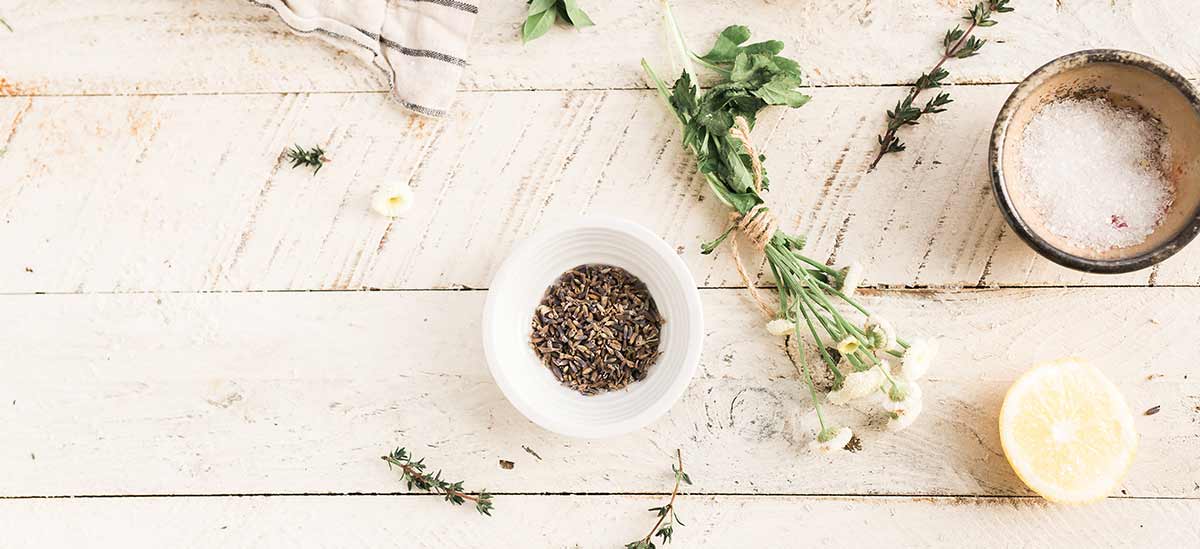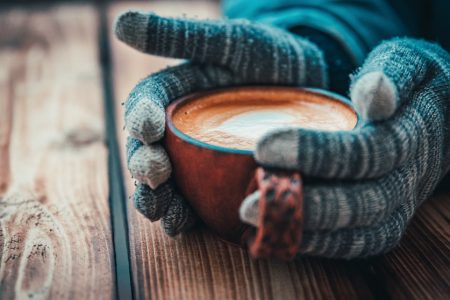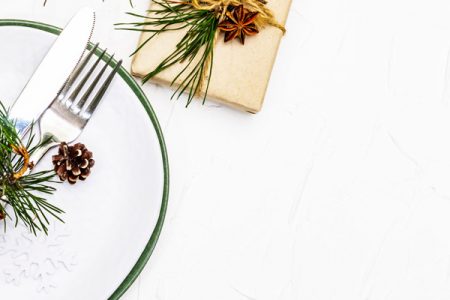Linda Scotti (RN, BSN, MA) has been working in the health-care field for over 40 years. She is a registered nurse and has her Master’s in Education. For over 30 years, she has become well-versed in Ayurveda as a healing modality. She and her husband have lived and traveled all over the world, from Japan to Mexico, from India to South America. Her love and fascination with nature has led her on a journey in the study of herbs and spices. Their healing properties, she says, are safe and effective when used in the kitchen to create delicious meals and aromatic teas and infusions.
I’ve always been interested in nature and plants. As a young child, I loved to spend time in the woods or forest areas near where we lived. In those days, the forests were lush with life before the land was sold off to developers. Still today, those memories come back, feeling close to nature in all her beauty – talking to the trees and plant spirits. I lived in my own imaginative world. Fast forward to the 70’s, when I was in nursing school, I took a class on foraging from a local herbalist. This wise elder would take us on walks in the woods of Maryland to show us different edible wild plants. I remember once, as we passed a poison ivy patch, he pointed out a plant that grows near poison ivy. It’s called “jewel weed.” He explained that if you come in contact with poison ivy, to rub the juice from the stem of jewel weed on your skin and you won’t get the rash. It’s an antidote for poison ivy. How remarkable nature is!
Scientists estimate that there are more than 5,000 phytochemicals (naturally occurring plant chemicals). These phytochemicals not only protect plants from pathogens and cell damage, but they also help us when we ingest the plant. Herbs and spices contain high levels of these phytochemicals which are powerful antioxidants that improve digestion, reduce inflammation, support the immune system, and are antimicrobial. Embracing a cuisine rich in spices, as well as fruits and vegetables, is not only much more flavorful, but also health–promoting and disease–preventive. Our ancestors have known this for thousands of years. We only need to look at cookbooks from other cultures around the world to see how they’ve used the local herbs and spices in their food.
More than 2000 years ago, the Hippocratic school of medicine proclaimed, “Let food be thy medicine.” Fortunately, this sage advice is coming back these days as more and more people are demanding local, organic, nutrient-rich food. Plant-based whole foods are gaining in popularity. Adding herbs and spices to our food, not only adds more flavor, but adds concentrated nutrients for our health and well-being. Another added benefit is that when you use herbs and spices, you tend to use less salt!
Many of the chronic diseases today start in the gut with poor digestion. Digestive spices like ginger, coriander, cumin, fennel, and cardamom should be added to everyone’s daily diet. Clove, oregano, thyme, cinnamon, and cumin are now being studied as additives to prevent spoiling in packages because of their high levels of antibacterial and antifungal properties. Why not put them in our food?
The Mediterranean diet has long been known for its health–promoting properties. Just look at the spices they use – thyme, rosemary, oregano, sage, lavender, etc. India has a very low incidence of dementia, primarily attributed to their daily dose of turmeric with its powerful curcumin pigment that gives it that bright yellow color. We can learn quite a bit from these cultures.
When I visited Istanbul, the food was so flavorful and alive! My mouth still waters remembering the olives with fresh herbs that I ate for breakfast daily. Recently, on one of my frequent visits to Mexico City, I had oyster mushrooms with mole at a vegan restaurant. The mole was purely vegan and made from scratch! The flavors just danced in my mouth with each bite. I had never experienced those flavors in food before – an orchestra of flavors – the various chilies, the dried fruits, the nuts, the spices, and then the dark chocolate. It was so amazing I purchased two bags of mole paste at a local vegan market to take home!
The key to receiving benefits from these herbs and spices is to use the freshest and highest quality herbs and spices available. If possible, it’s best to buy the whole spice (seeds, barks, berries, etc.) in small quantities and grind them fresh as you use them. An inexpensive coffee grinder works great. Look for the best quality and freshest batch. This is especially important for herbal teas and infusions. Now a days there are so many small organic farms where you can buy direct.
Ayurveda – “The Science of Life”
When I lived in El Salvador, I got a parasite. My symptoms were acute with extreme knife-like pain in my gut. Fortunately, the local doctors knew how to treat it and had the latest medicine for that specific parasite. As soon as I took the medication, the pain subsided within 20 minutes. I was grateful for the relief, but the following day my body produced hives from head to toe! My entire immune system shifted, and I was left with severe allergies to many foods that I could freely eat before. That’s when I turned again to Ayurveda. I had attended classes from Dr. Vasant Lad in Boston previously. Upon returning to the U.S. I met him in Boston for a consult. It was a long road back to good health, but with some panchakarma treatments, Ayurvedic herbs, and following a diet for my constitutional needs, I returned to excellent health and all those allergies just disappeared. Ayurveda originated in India some 5000 years ago and is often referred to as the “Mother of All Healing”. Dr. Vasant Lad has an institute and clinic in New Mexico. You can check out his website at www.ayurveda.com. He has a lot of free resources. The take–home from Ayurveda is that what’s good for you may not be good for me. Our constitutions, present state of health, and season of the year are all taken into consideration with the energetics of the plants. For example, if your primary dosha is Pitta and it’s a hot summer day, you may not want to eat too much garlic which is warming and drying, while cooling peppermint hibiscus tea would be lovely. It helps to follow these Ayurvedic principals when using herbs and spices.

These are some of the spices I use daily:
Turmeric: Known as “Indian gold” and “guardian of the liver” turmeric is beyond amazing – a must for everyone to take daily. You only need ¼ teaspoon a day to reap its immune boosting benefits as it’s very potent. Always take it with a pinch of black pepper for better absorption. Cooking it in oil also aids in absorption. It’s available in powder or the fresh root. Its benefits are extensive – anti-inflammatory, analgesic, hemostatic (stops bleeding), blood purifier, and a powerful antioxidant – a cancer fighter. More than a thousand studies have shown the many cancer fighting properties and DNA protection of curcumin, the active pigment that gives it that yellow color. I always use it in bean dishes, soups, scrambled tofu, sauces, and also enjoy it in warm “golden milk” which is very popular now.
Black Pepper: Known as the “King of Spices,” black pepper potentiates the bioavailability of turmeric as much as 2000 percent! It also increases the bioavailability of other herbs. Keep the grinder on the table since it strongly supports digestion and helps you absorb nutrients from your food. It’s warming, stimulating, and energizing.
Coriander seeds: One of the oldest spices, dating back to 7000 B.C., has powerful cell-protecting antioxidants that sooth digestive ailments. Another popular spice in India, it’s a key ingredient in curry spice mixes. It blends well with all spices and is used in both savory and sweet dishes with cinnamon and cardamom.
Cumin seeds: Another super digestive spice, cumin is the most popular spice in Mexican cuisine. Its volatile oils come alive in Indian cooking as the seeds are put to heat and that nutty aroma fills the kitchen. Cumin is full of vitamins and minerals, including iron. It also is about one percent salicylic acid which contributes to its anti-inflammatory properties. Organic plants were found to have six times more salicylic acid than conventional. That’s because salicylic acid is a defense hormone of plants; the concentration increases when plants become stressed – like when plants are bitten by bugs. Another reason to eat organic!
 Fennel: Fennel has it all – it’s a vegetable, herb, and a spice. The seeds have potent aromatic qualities that help to relieve digestive problems, muscle tension, and pain as it’s a powerful anti-inflammatory. I add it to soups and also enjoy it as a tea after a meal. You can also chew on the seeds for better digestion and fresh breath.
Fennel: Fennel has it all – it’s a vegetable, herb, and a spice. The seeds have potent aromatic qualities that help to relieve digestive problems, muscle tension, and pain as it’s a powerful anti-inflammatory. I add it to soups and also enjoy it as a tea after a meal. You can also chew on the seeds for better digestion and fresh breath.
Ginger: I can’t imagine food without ginger. I mostly use the fresh root and put it in and on just about everything. It’s great in soups, sauces, marinade for baked tofu or tempeh, and of course in golden milk. Living in Japan, we ate it daily. Ginger is a proven remedy for nausea, motion sickness, and a powerful anti-inflammatory shown to decrease joint pain. Ayurveda reveres ginger and refers to it as the “universal medicine”. If you eat a small piece of fresh ginger before your meal, it stimulates the digestive fire–releasing enzymes for better assimilation of nutrients.
Cardamom: I’m in love with cardamom with its enticing flavor and aroma! Known as the “Queen of Spices” for its special medicinal and culinary values, cardamom always has been and still is one of the world’s most expensive spices. Saffron and vanilla are the other costly ones. Cardamom has powerful anti-inflammatory and anti-spasmodic qualities that improve digestion. The best cardamom comes from the rainforests of Southern India where it is harvested by hand. Try it in chai tea and also in coffee as it reduces the acid, and neutralizes the effects of the caffeine. It’s used in many desserts and is lovely with dark chocolate. In Ayurveda, cardamom is known to calm the mind and stabilize emotions. Its sweet flavor activates comfort and a positive feeling about life.
Other powerful spices:
Mediterranean spices like rosemary, thyme, basil, oregano, sage, and saffron are anti-oxidant powerhouses. Experiment with adding them to roasted veggies, pasta and grain dishes, and also in baking. I have a wonderful recipe for savory almond cookies with rosemary. Rosemary is a stimulating herb that improves circulation, relieves headaches, enhances memory, and is calming to the nervous system. Keep a rosemary plant in your home because even smelling rosemary does something to our brain to enhance mental clarity. Rosemary is also a great hair tonic!
Adaptogens: The term “adaptogen” refers to those herbs and roots that help us adapt to stress. Although these adaptogens have been used for thousands of years, they are being popularized today with their regenerative qualities. Ashwagandha is one of these very popular adaptogens. Just ½ teaspoon in the morning increases physical endurance and strength for the day, and when you take a dose in the evening, it can help with insomnia. I usually put ashwagandha in my golden milk. Other popular adaptogens are Ginseng, Amla, Astragalus, Holy Basil, Schizandra, Rhodiola, Licorice, and Reishi. These can be made into teas or thrown into smoothies (powders). Astragalus and Reishi slices can be added to soups for an immune boost. Holy basil or tulsi makes a wonder tea – add a few rosebuds and it’s heavenly.
Nourishing Herbal Infusions: Herbal infusions are a concentrated vitamin and mineral–packed way to use dried herbs. My favorite ones are nettles, oat straw, and red clover. Get some quart size glass jars from the hardware store (they’re also very useful to store dried herbs in). Fill it about 1/3 with the dried herb (1 ounce or about 1 cup), pour boiling water to fill, mix, cover tightly, and let it brew overnight. Next morning strain out the herbs, squeezing them to get all those valuable nutrients. Enjoy cold or hot – sip throughout the day. It’ll stay fresh in the frig for about 36 hours. These are great spring tonics and nettles are great for the bones!
A cautionary note: When I speak about using or ingesting herbs and spices, I am talking about cooking with herbs and spices (and using them in teas and infusions), not taking them in a pill form. Consult with a certified herbalist or your doctor when considering taking anything in a concentrated form.
–Linda Scotti, RN, BSN, MA







